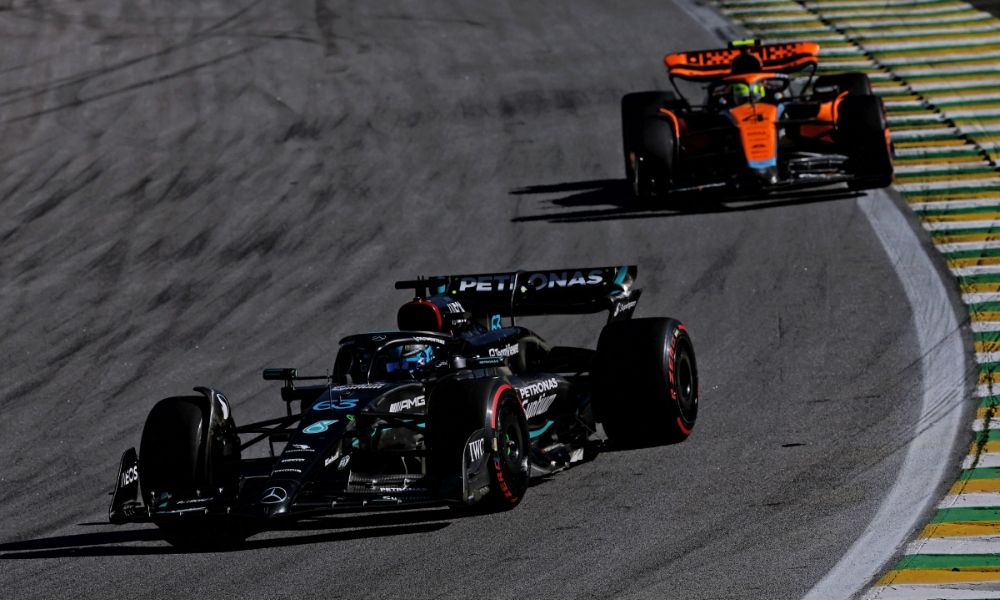Formula 1 has always been a sport that thrives on innovation and experimentation. From car design and tyre compounds to race weekend formats, change is nothing new in the paddock. However, one of the more notable adjustments this season has been a reshuffle in the order of sprint races and traditional Grand Prix events. This move has stirred plenty of discussion among fans, drivers, and teams alike. But why exactly did F1 make this change, and what does it mean for the sport going forward?
What Was the Previous Sprint Race Format?
When sprint races were introduced to Formula 1 in 2021, the concept was to add more competitive action to the weekend. Traditionally, Fridays were reserved for practice sessions, Saturdays for qualifying, and Sundays for the main Grand Prix. The sprint format disrupted this flow.
In the original arrangement, Friday featured a shortened qualifying session to set the grid for Saturday’s sprint race. The sprint, in turn, determined the starting order for the traditional Grand Prix on Sunday. This meant the sprint race acted almost like an extended qualifying session, with championship points offered to the top finishers.
What’s Different About the New Sprint Schedule?
This season, Formula 1 made a significant tweak. Instead of having the sprint decide the Sunday grid, sprint events have been separated into their own self-contained competition. The new order now works as follows:
- Friday hosts qualifying for the Grand Prix.
- Saturday is dedicated to the sprint day, with a sprint qualifying session followed by the sprint race itself.
- Sunday remains the home of the traditional Grand Prix.
This change effectively decouples the sprint from the main race, meaning the outcome of the sprint no longer impacts Sunday’s starting order.
Why Did F1 Make This Change?
The main driving force behind this reshuffle appears to be the desire to give each race event its own identity and importance. Under the previous structure, teams sometimes played it safe in the sprint to avoid damaging the car or compromising their position for Sunday’s race. By making the sprint results independent from the Grand Prix starting order, drivers are now freer to race more aggressively without fear of jeopardising their main event performance.
The change also aims to make Saturdays more engaging for spectators. With a dedicated sprint qualifying and sprint race, fans get an entire day of competitive action that feels distinct from the rest of the weekend. This is especially appealing for those attending in person, as they now see more meaningful racing across all three days.
How Has the New Format Been Received?
Reactions have been mixed, as is often the case with any format change in Formula 1. Some drivers welcome the separation, as it encourages harder racing and allows them to focus fully on both events. Teams, too, appreciate the reduced risk to their Sunday prospects.
However, some fans have expressed concern that the sprint races still lack the prestige and narrative weight of a Grand Prix. Without influencing the main race grid, they can feel like a side show rather than a central part of the championship story.
That said, the sprint does still carry championship points—albeit fewer than a Grand Prix—which means there is still a competitive incentive. In a close title battle, those extra points can prove decisive.
What Are the Benefits for Fans?
From a spectator’s perspective, the new order has several benefits. It means that every day of the race weekend offers competitive sessions that count for something. Friday’s qualifying becomes more important, as it sets the Grand Prix grid rather than the sprint order. Saturday’s sprint format delivers its own mini-race excitement, and Sunday remains the showpiece event.
For those attending race weekends in person—whether it’s Silverstone or an overseas venue like the Singapore Grand Prix 2025—it’s an even better experience. You’re guaranteed to see proper wheel-to-wheel action on both Saturday and Sunday, rather than just a warm-up for the main event.
Does It Affect Team Strategies?
Yes, quite significantly. Previously, teams might have treated sprint races conservatively, prioritising tyre preservation and damage avoidance over bold overtakes. Now, with no impact on Sunday’s grid, they can attack the sprint with more aggression.
This change also influences how teams allocate resources across the weekend. Engineers can focus on optimising the car for two different types of race rather than treating Saturday as a stepping stone for Sunday. It introduces a fresh layer of strategy, especially when considering tyre allocation, fuel load, and engine usage.
How Does It Impact the Championship?
While the sprint race points on offer are smaller, they can still add up over the season. For title contenders, maximising sprint performance could make a difference, particularly in closely fought battles.
For midfield teams, sprints offer additional opportunities to score points that might be harder to come by in a full-length Grand Prix. This can shake up the constructors’ standings and inject extra unpredictability into the championship race.
The separation also reduces the risk of a single incident in a sprint having a double impact on both the sprint and the Grand Prix. In past seasons, a crash on Saturday could ruin a driver’s weekend entirely. Now, the consequences are more contained.
Are There Any Downsides to the New Format?
One criticism is that separating the sprint from the Grand Prix might make it feel less connected to the championship narrative. Fans who enjoy seeing a direct cause-and-effect between Saturday and Sunday may feel something has been lost.
Another issue is calendar congestion. Adding more competitive sessions means teams have less time for practice and data gathering. This could lead to unpredictable performances but also increases the risk of reliability issues for some cars.
Lastly, the sprint race still has its critics who question whether it’s necessary at all. Traditionalists argue that Formula 1 doesn’t need additional races to maintain excitement, as the Grand Prix itself is the pinnacle.
Could This Format Change Again in the Future?
Formula 1 has shown it’s not afraid to adapt and refine its format based on feedback from teams, drivers, and fans. If this season’s reshuffle proves successful, the sprint structure might remain in place for several years. However, if viewership numbers or fan engagement drop, the format could be adjusted again.
The sport’s decision-makers have made it clear that sprint weekends are here to stay in some form. The question is whether they will continue to evolve into something even more distinct or revert to being more closely tied to the main race.
How Does It Fit Into the Wider F1 Calendar?
The sprint format is used selectively across the season rather than at every race. Choosing which circuits host sprints is a balancing act. Tracks with good overtaking opportunities and fan-friendly layouts are generally preferred, as they deliver more exciting short-format racing.
This season, sprints feature a mix of traditional circuits and newer additions to the calendar. Whether you’re heading to a historic European venue or a modern street circuit like the Las Vegas Grand Prix 2025, the format aims to maximise entertainment value for fans both trackside and watching from home.
What Does This Mean for the Future of Race Weekends?
The reshuffle of sprint and traditional race order reflects Formula 1’s willingness to evolve in response to audience preferences. It’s a reminder that the sport is as much about entertainment as it is about engineering and competition.
While purists may prefer the classic format, others see the new structure as a way to get more action for their time and money. The truth is, F1 is in a constant state of experimentation, and this latest adjustment is simply part of its ongoing journey to balance tradition with innovation.








